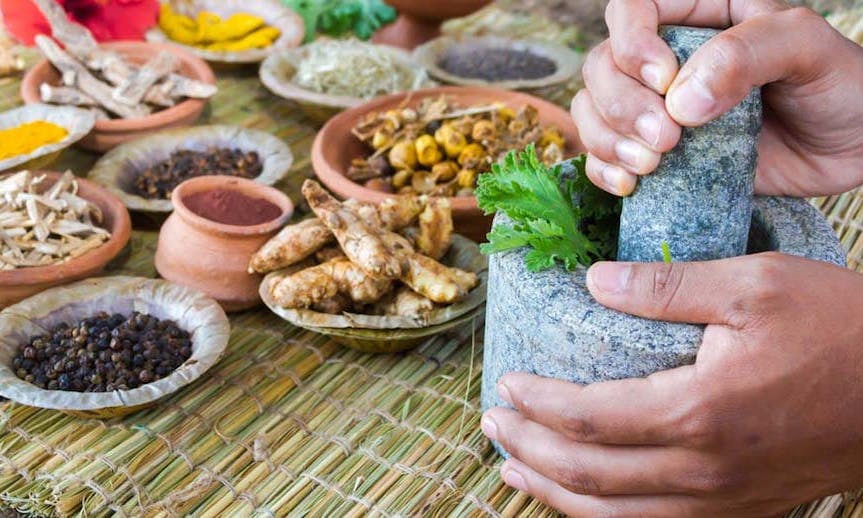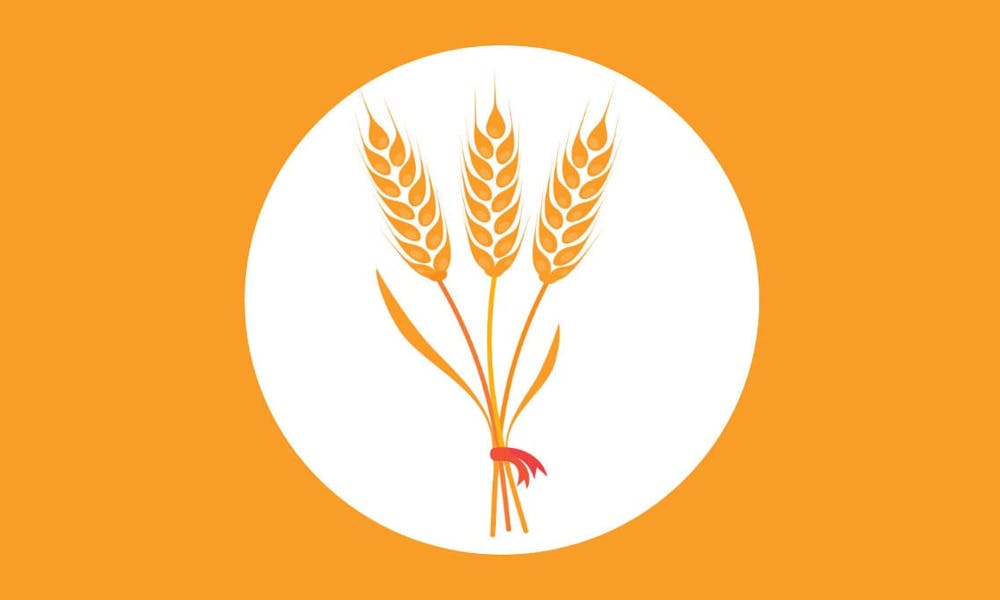
Subscríbete para recibir un plan de comidas para la diabetes de 7 dias, gratis
Ayurveda is an ancient Hindi healing system originating in India, where it is still widely practiced. In the west, Ayurveda is gaining in popularity but many people still regard it as an unscientific and thoroughly ‘woo-woo’ alternative medicine that relies on the placebo effect, much in the same way they view homeopathy. The WHO (World Health Organization), however, recognizes it as a legitimate form of medicine.
Ayurveda, much like TCM (traditional Chinese medicine) developed over thousands of years of observation and insight. The name itself is made up of two Sanskrit words, ayu (mind, body and soul or life) and veda (which encompasses everything from wisdom to knowledge, sacred knowledge, vision and science). Thus Ayurveda translates into “the science of life” or “the sacred knowledge of life”.
Ayurvedic Medicine for Diabetes
Unlike conventional medicine, Ayurveda focuses more on the patient with the disease than on the disease itself[^1]. Not surprisingly, the treatments prescribed will be very different. If you go to a doctor trained in allopathic medicine and he diagnoses you with diabetes type 2, the predictable treatment options are various drugs to either control your blood sugar or increase insulin.
Your doctor might also send you to a dietician who will teach you about counting carbs and keeping a log book so you know how much you have eaten and can therefore calculate how much insulin you need to ‘cover’ the expected surge in blood sugar.
An Ayurvedic practitioner, on the other hand, will look at you as an individual but he will also consider things like the social and economic aspects too. He will look at nature–how you fit into it and what your relationship is with the natural world. In other words, the whole picture, not just the disease itself. It is about the promotion of balance and health rather than the eradication of disease.
He will consider your state of health from a physical, mental, psychological and spiritual point of view, based on your constitution. In Ayurveda, this is based on the three "doshas", which can be roughly translated as energies. They are named Vata, Pitta and Kapha. Every one of us has a unique proportion of these energies and usually manifest one, sometimes two, as dominant. When a dosha is unbalanced, disease results and Ayurveda seeks to correct that.
Conventional medicine looks at diabetes 2 as a life-long condition that needs to be ‘managed’ with drugs. If you get the disease, bad luck or genetics are to blame and there isn’t much you can do about it. Ayurvedic medicine for diabetes looks at it as an imbalance or disease that can be addressed by including things like massage, yoga, exercise, meditation, detoxification, herbal remedies and specific changes in diet and lifestyle tailored for you.
The mind/body connection, stress and diabetes
The mind/body connection underpins the whole premise of Ayurveda. According to Deepak Chopra, “The two main guiding principles of Ayurveda are 1) the mind and the body are inextricably connected, and 2) nothing has more power to heal and transform the body than the mind.”
When you are stressed, your adrenals pump out the hormone cortisol. In caveman times, this was really useful in the short term because it ramped up his blood sugar to supply energy to his larger muscle groups, giving him the energy to either fight the tiger or take flight. Either way, the physical exertion involved helped to dissipate the build-up of stress hormones and allow everything to return to normal.
Unfortunately, today our stressors often come in the form of heavy traffic, unreasonable bosses and any number of other frustrations that leave us stewing and chewing in the long term instead. This means that the cortisol is left coursing through our veins and if this happens on a regular basis, it leads to a slew of nasty consequences, increased blood sugar levels being just one.
As an elevated cortisol level is designed for an emergency response, when it is a near-constant state of affairs, you can expect trouble. It supresses the immune system, causes cravings for high-calorie food, pushes up your blood pressure, interferes with hormonal balance, compromises digestion and assimilation of nutrients, and obviously contributes to the development of diabetes and other chronic conditions.
If you are stressed and develop diabetes, you can understand how throwing drugs at the problem is not going to help you very much and how engaging your mind and your body through mindfulness, meditation, yoga and exercise makes much more sense.
Ayurvedic herbs for diabetes
It’s interesting to note that some Ayurvedic herbs and plants used for diabetes treatment are adaptogens–meaning that they help us to deal with stress by balancing the body. (In Ayurveda, a loosely related term is Rasayana, which refers to a food or activity which contributes to overall health, well-being and longevity.)
One of these herbs is ashwagandha, which helps to reduce chronic stress by teaching your body to adapt to anxiety because it regulates neurotransmitters like cortisol and serotonin. Another is Pterocarpus marsupium, aka Indian Kino Tree [^2]. It is an immunomodulator that relieves stress and lowers blood sugar but is also multipurpose. The various parts of the plant have been used for centuries to treat things like inflammation, cuts, bruises, diarrhea, vitiligo, eczema, psoriasis, asthma, bronchitis, fever, boils and obesity, in addition to diabetes.
A very important herb in Ayurveda is Tulsi or Holy Basil Leaf, also known as an anti-aging elixir. Besides its use in regulating blood sugar, it is a calming herb used for a number of other things like enhancing meditation and immunity, improving digestion, supporting bones and joints, and contributing to overall health and well-being.
Is it Ayurveda?
As wonderful as it is that Ayurveda is becoming more accepted in the west, the danger is that it is often diluted by adapting it to our magic bullet, one-size-fits-all mentality. Taking a preparation labelled “Ayurvedic” means nothing if you do not use it in conjunction with the other methods prescribed. Ayurveda is a complete system, a way of life and not just an isolated remedy.
[1]:What Is Ayurveda?. The Chopra Center. N.p., 2017. Web. 30 Mar. 2017. [2]:Bijasal (Pterocarpus Marsupium Roxb.) – Indian Kino Tree. Regional Plant Resource Centre. N.p., 2017. Web. 30 Mar. 2017.
![[object Object]](https://images.prismic.io/dediabetes/e0b95e20-c0d4-4b4a-b834-ea76b5f34da8_author_std.jpg?ixlib=gatsbyFP&auto=compress%2Cformat&fit=max&rect=5%2C0%2C59%2C59&w=120&h=120)


